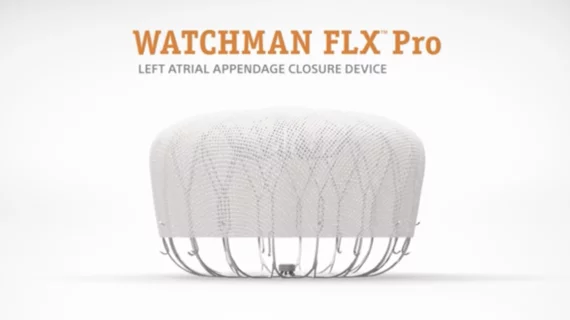Boston Scientific gains FDA approval for Watchman FLX Pro LAAC device
Boston Scientific has received U.S. Food and Drug Administration (FDA) approval for its Watchman FLX Pro left atrial appendage closure (LAAC) device. This represents the latest iteration of the Watchman FLX technology, which was first approved by the FDA in 2020 to help patients with non-valvular atrial fibrillation reduce their stroke risk without requiring long-term oral anticoagulation (OAC).
Boston Scientific is highlighting multiple features of the Watchman device, including a polymer coating designed to reduce the risk of device-related blood clots and new visualization markers that help with placement. The device also comes in a larger size option—40 mm—which means more patients will now be eligible for implant. The company also emphasized that the rounded design first seen with the Watchman FLX device is still in place.
“We are pleased to introduce U.S. clinicians to our newest LAAC technology, which is designed to enhance post-procedural healing, improve the precision of Watchman FLX Pro implants, and expand the size range of treatable appendages,” Joe Fitzgerald, Boston Scientific’s group president of cardiology, said in a prepared statement announcing the news. “These enhancements to our Watchman FLX technology will enable efficiency during implant procedures and allow physicians to optimize treatment for their patients.”
“There is a rich history of safe use and low thrombosis rates in cardiovascular devices that utilize this thromboresistant polymer coating, and we have adapted that model to provide a more streamlined healing process that begins immediately following LAAC,” added Kenneth Stein, MD, Boston Scientific’s senior vice president and global chief medical officer. “We believe this evolution of the Watchman device also gives promise for a future with less thrombosis risk, which may eventually enable a simpler post-implant drug regimen for patients.”
In September 2022, Boston Scientific gained approval from the FDA to expand the labeling of its Watchman FLX device to include an additional 45-day dual anti-platelet therapy (DAPT) treatment option. This allowed U.S. clinicians to choose between DAPT and short-term OAC plus aspirin following LAAC procedures.

